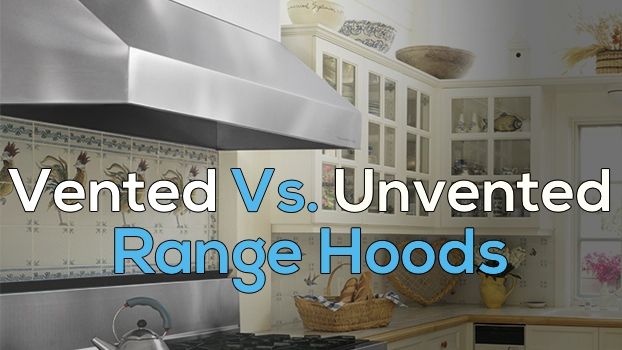Range hoods are installed over stoves or cooktops to remove airborne grease, combustion products, fumes, smoke, heat, and odors. They are also called exhaust hoods or vent hoods. Hoods are often equipped with a light to illuminate the cooking surface.
Kitchen Rangehood Ventilation Solutions
If you have a range hood in your kitchen, you may be wondering how it actually vents. Most range hoods are vented to the outside of your home, which helps to remove smoke, odors, and heat from the kitchen. Some range hoods also have filters that need to be regularly cleaned in order to work properly.
Ductless Range Hood
A ductless range hood is a type of hood that does not require ductwork in order to operate. Ductless range hoods are typically mounted under a cabinet or shelf and use an internal blower to circulate air. Many ductless range hoods also come equipped with charcoal filters to help remove odors and smoke from the air.

Credit: www.bscculinary.com
Do Range Hoods Have to Be Vented Outside?
No, range hoods do not have to be vented outside. Some range hoods are designed to recirculate the air back into the kitchen. These types of range hoods have filters that need to be replaced regularly.
How Do Range Hood Vents Work?
A range hood is a device that’s installed above a stove or cooktop to capture smoke, grease, and odors produced while cooking. The vent of a range hood directs these contaminants away from the cooking area to the outdoors.
Most range hoods are vented to the outside of your home, but some are recirculating, which means they have filters that clean the air and send it back into your kitchen.
Recirculating range hoods don’t require ductwork, so they’re easier (and less expensive) to install.
When shopping for a range hood, you’ll need to decide between ducted and recirculating models. You’ll also need to choose a style and finish that complements your kitchen décor.
Other considerations include the size of the unit (it should be at least as wide as your cooktop), CFM (cubic feet per minute; this indicates how quickly the unit can clear the air in your kitchen), and noise level (measured in sones; look for something under 1.0).
Do Recirculating Range Hoods Need to Be Vented?
No, recirculating range hoods do not need to be vented. These types of hoods are designed to work without a duct or vent, instead using filters to clean the air and circulate it back into the kitchen. Recirculating range hoods can be a good option for kitchens that don’t have the ability to vent to the outside, or for those who want to avoid any potential ductwork issues.
How Do You Vent a Range Hood on an Outside Wall?
There are a few different ways that you can vent a range hood on an outside wall. The most common way is to use a soffit vent. This is a small opening in the outer wall of your home that allows air to escape.
You will need to measure the opening before you purchase your range hood, so that you know what size soffit vent you need. Another option is to use a gable end vent. This type of vent is installed at the top of the outside wall and provides an opening for air to escape.
Again, you will need to measure the opening before purchasing your range hood so that you get the right size gable end vent.
Conclusion
Most homes have a range hood in the kitchen that is vented to the outside. The purpose of the range hood is to remove smoke, odors and heat from the cooking area. The fan in the range hood pulls air through a duct to the outside of the home.
Some range hoods also have a light that illuminates the stove top.


